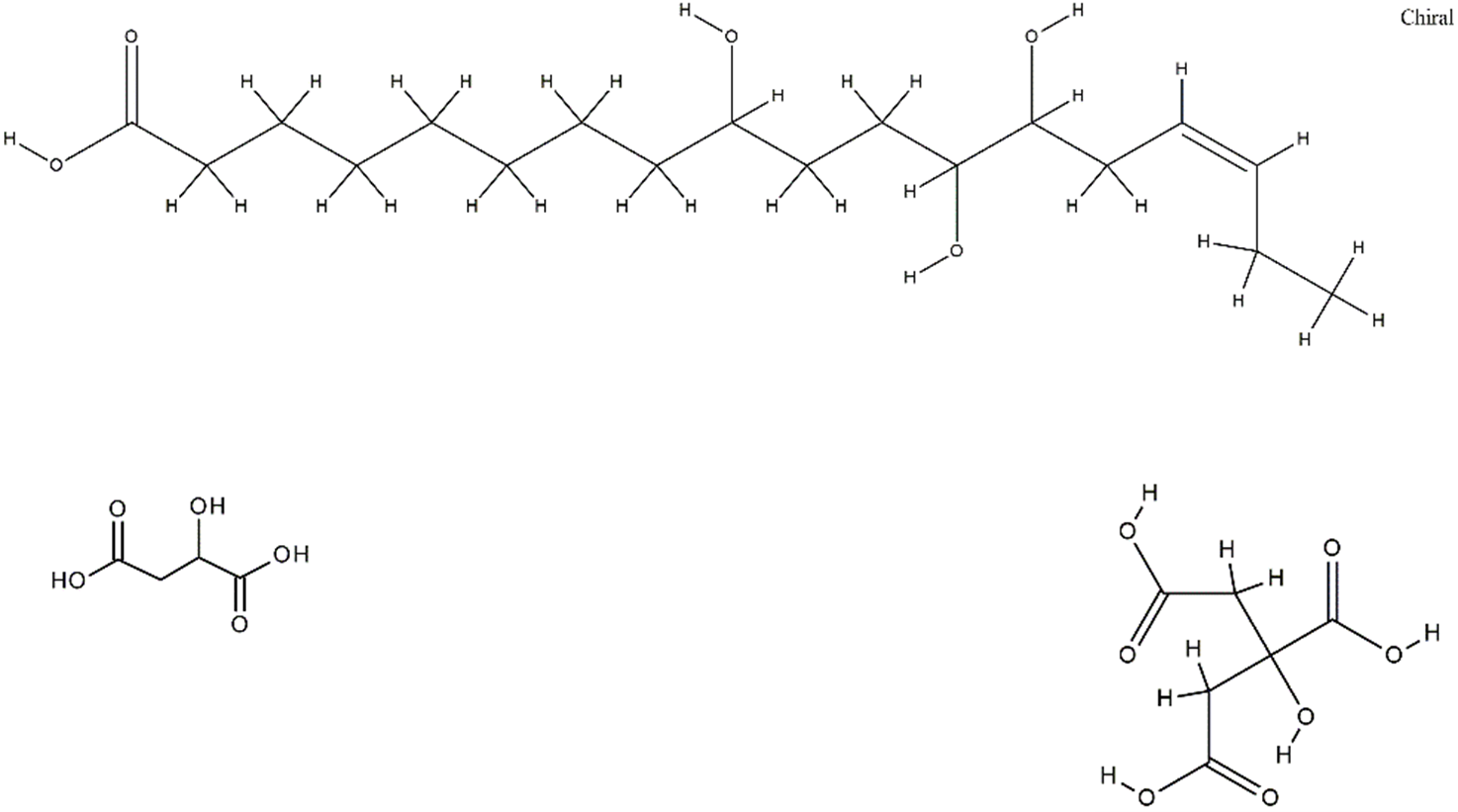Phytochemical Profile and Antibacterial Activity of Massoia aromatic Becc., Acorus calamus L., and Allium sativum L. against Bacteria Causing Rhinosinusitis
DOI:
https://doi.org/10.36733/medicamento.v9i2.5961Keywords:
Acorus calamus, Allium sativum, antiBac-Pred, antibacterial, Massoia aromaticAbstract
Triketuka, an herb with multiple therapeutic activities, is featured in Balinese medicinal texts. This herb is composed of Massoia aromatic Becc. (masoyi), Acorus calamus L. (dringo), and Allium sativum L. (garlic). The antibacterial activity of these ingredients against bacteria causing rhinosinusitis has not been fully evaluated. Hence, this study seeks to determine the potential of these three components, especially with regards to their effectiveness against rhinosinusitis. In this research, an in vitro antibacterial test was conducted against Streptococcus aureus, Staphylococcus epidermidis, Escherichia coli, and Pseudomonas aeruginosa. The phytochemical profile of each plant was determined using Liquid Chromatography-Mass Spectrometry. The Minimum Inhibitory Concentration value was determined by carrying out the antibacterial test via the microdilution method. The detected compounds were analyzed for their contributions through the prediction of activity spectra for biologically active substances (PASS) online and Antibac-Pred. As a result of the in vitro antibacterial test, the samples were found to have MIC > 4096 ppm against all bacteria except Massoia aromatic and Acorus calamus against Staphylococcus aureus in MIC 4096 ppm each. This discovery was further verified through PASS online and Antibac-Pred. The studies indicate that certain compounds found in the samples exhibit antibacterial activity, albeit with low efficacy against the tested bacteria. In conclusion, the plants exhibit low antibacterial potential against bacteria that cause rhinosinusitis. Further research on the combination of the three plants is required to enhance their antibacterial efficiency.
References
Lahdji A, Novitasari A, Tajally A, Ratnaningrum K. Buku Ajar : Sistem Telinga, Hidung, Dan Tenggorokan. Unimus Press; 2017.
Benninger MS, Ferguson BJ, Hadley JA, et al. Adult chronic rhinosinusitis: Definitions, diagnosis, epidemiology, and pathophysiology. Otolaryngol - Head Neck Surg. 2003;129(SUPPL. 3):1-32. doi:10.1016/S0194-5998(03)01397-4
Hamilos DL. Chronic sinusitis. J Allergy Clin Immunol. 2000;106(2):213-227. doi:10.1067/mai.2000.109269
Wiyana Y, Juniartha MG. Terapi Jalā Netī sebagai Upaya Pembersihan Saluran Pernapasan Hidung. J Yoga Dan Kesehat. 2021;4(2):204. doi:10.25078/jyk.v4i2.2679
Buhrman S. Ayurvedic Approaches to The Treatment of Sinus Infections. Protoc J Bot Med. 1997;2(2):135-139.
Rollando R, Prasetyo YSA, Sitepu R. Uji Antimikroba Minyak Atsiri Masoyi (Massoia aromatica) Terhadap Bakteri Streptococcus mutans. Maj Farm dan Farmakol. 2019;23(3):52-57.
Rita WS, Suirta IW, Prisanti P, Utami P. Aktivitas Antibakteri Minyak Atsiri Rimpang Jeringau ( Acorus calamus Linn .) Terhadap Bakteri Escherichia coli dan Staphylococcus aureus. Cakra Kim (Indonesian E-Journal Appl Chem. 2017;5(2):130-136.
Shahid M, Naureen I, Riaz M, Anjum F, Fatima H, Rafiq MA. Biofilm Inhibition and Antibacterial Potential of Different Varieties of Garlic (Allium sativum) Against Sinusitis Isolates. Dose-Response. 2021;19(4). doi:10.1177/15593258211050491
Fujisawa H, Suma K, Origuchi K, Kumagai H, Seki T, Ariga T. Biological and chemical stability of garlic-derived allicin. J Agric Food Chem. 2008;56(11):4229-4235. doi:10.1021/jf8000907
Goel RK, Singh D, Lagunin A, Poroikov V. PASS-assisted exploration of new therapeutic potential of natural products. Med Chem Res. 2011;20(9):1509-1514. doi:10.1007/s00044-010-9398-y
Khurana N, Ishar MPS, Gajbhiye A, Goel RK. PASS assisted prediction and pharmacological evaluation of novel nicotinic analogs for nootropic activity in mice. Eur J Pharmacol. 2011;662(1-3):22-30. doi:10.1016/j.ejphar.2011.04.048
Lagunin A, Stepanchikova A, Filimonov D, Poroikov V. PASS: Prediction of activity spectra for biologically active substances. Bioinformatics. 2000;16(8):747-748. doi:10.1093/bioinformatics/16.8.747
Shi D, Xu W, Balan P, Wong M, Chen W, Popovich DG. In Vitro Antioxidant Properties of New Zealand Hass Avocado Byproduct (Peel and Seed) Fractions. ACS Food Sci Technol. 2021;1(4):579-587. doi:10.1021/acsfoodscitech.0c00018
FM153322|6915-15-7|DL-Malic acid - pharma grade. Biosynth. Accessed July 14, 2023. https://www.biosynth.com/p/FM153322/6915-15-7-dl-malic-acid-pharma-grade
Kim JH, Kwon KH, Oh SW. Effects of malic acid or/and grapefruit seed extract for the inactivation of common food pathogens on fresh-cut lettuce. Food Sci Biotechnol. 2016;25(6):1801-1804. doi:10.1007/s10068-016-0274-5
ELİUZ E. Antimicrobial activity of citric acid against Escherichia coli, Staphylococcus aureus and Candida albicans as a sanitizer agent. Eurasian J For Sci. 2020;8(3):295-301. doi:10.31195/ejejfs.787021
Misrahanum M, Fitri R, Ismail YS. Antibacterial activity of ethanol extract of delingo(Acorus Calamus L.) rhizome against Staphylococcus aureus and Escherichia coli. J Pharm Sci. 2022;294(2):300.
Rollando R, Sitepu R. Efek Antibakteri dari Kombinasi Minyak Atsiri Masoyi dan Kayu Manis. J Kefarmasian Indones. 2018;8(1). doi:10.22435/jki.v8i1.7639.26-33
Mulyani S, Purwanto, Sudarsono, et al. Minyak Atsiri. 1st ed. (Sudarsono, Purwanto, eds.). Gadjah Mada University Press; 2020.
Hamzah H, Pratiwi SUT, Hertiani T. Efficacy of C-10 massoialactone against-multispecies microbial biofilm. Biointerface Res Appl Chem. 2022;12(3):3472-3487. doi:10.33263/BRIAC123.34723487
Rajab MN, Edy HJ, Siampa JP. FORMULASI SEDIAAN SALEP EKSTRAK ETANOL BAWANG PUTIH (Allium sativum) SEBAGAI ANTIBAKTERI. Pharmacon. 2021;10(3):1-8.
Raybaudi-Massilia RM, Mosqueda-Melgar J, Martín-Belloso O. Antimicrobial activity of malic acid against Listeria monocytogenes, Salmonella Enteritidis and Escherichia coli O157:H7 in apple, pear and melon juices. Food Control. 2009;20(2):105-112. doi:10.1016/j.foodcont.2008.02.009
Kundukad B, Udayakumar G, Grela E, et al. Weak acids as an alternative anti-microbial therapy. Biofilm. 2020;2(August 2019):100019. doi:10.1016/j.bioflm.2020.100019
Pogodin P V., Lagunin AA, Rudik A V., Druzhilovskiy DS, Filimonov DA, Poroikov V V. AntiBac-Pred: A Web Application for Predicting Antibacterial Activity of Chemical Compounds. J Chem Inf Model. 2019;59(11):4513-4518. doi:10.1021/acs.jcim.9b00436
Muthuswamy S, Rupasinghe HPV. Fruit phenolics as natural antimicrobial agents: Selective antimicrobial activity of catechin, chlorogenic acid and phloridzin. J Food Agric Environ. 2007;5(3&4):81-85. https://www.wflpublisher.com/Abstract/1043

Downloads
Submitted
Accepted
Published
How to Cite
Issue
Section
License
Copyright (c) 2023 Jurnal Ilmiah Medicamento

This work is licensed under a Creative Commons Attribution-NonCommercial-NoDerivatives 4.0 International License.

















